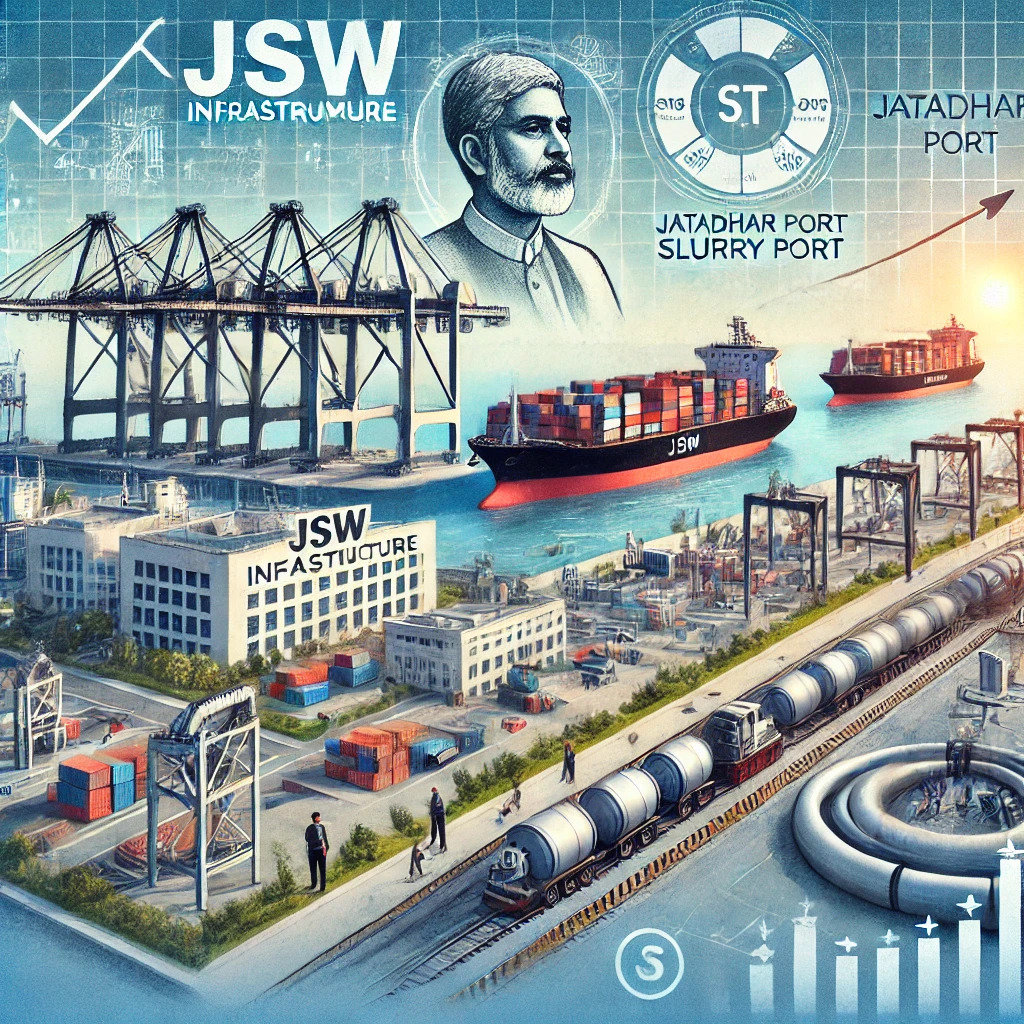New Delhi: The Sajjan Jindal family, promoters of JSW Infrastructure, plans to dilute 14% of its stake in the company to fund a massive Rs 39,000-crore capital expenditure (capex) over the next five years. The move comes as the company looks to expand its operations, bid for privatized terminals, and acquire stressed logistics assets through the National Company Law Tribunal (NCLT) process.
Compliance and Capital Strategy
Currently holding an 85.61% stake in JSW Infra, the Jind
al family will reduce its holding to below 75% to comply with regulatory norms requiring a stake cut within three years of listing. The company, which went public in September 2023, plans to maintain a 70:30 debt-to-equity ratio to finance the expansion, utilizing internal cash accruals for additional equity needs.
“Existing cash will be used for equity in the Rs 39,000-crore expansion, covering 25-30% of the remaining debt,” said Lalit Singhvi, Whole-time Director and CFO of JSW Infra.
JSW Infrastructure operates 10 port concessions across India, with a total capacity of 174 million tonnes per annum (MTPA), and manages logistics terminals in the UAE. The company views logistics as a crucial extension of its business to provide last-mile connectivity for its clients.
“We will actively look at acquisitions in this segment, whether through the NCLT process or distressed assets unable to scale,” Singhvi added. Additionally, JSW Infra plans to bid for upcoming ports and terminals as part of its aggressive growth strategy.
Debt and International Financing
On raising debt from Indian and international banks, Singhvi stated, “Rupee loans will fund Indian projects, while international ventures, like the UAE oil tank terminal, may use dollar loans. Previously, we raised a $400-million bond for that project. The mix of Indian and international debt will depend on interest rates at the time.”
With 18% of JSW Infra’s revenue currently denominated in U.S. dollars—primarily from vessel-related charges—the company does not see an immediate need for hedging.

Major Infrastructure Investments
JSW Infrastructure has earmarked Rs 30,000 crore for port expansions and greenfield projects, with an additional Rs 9,000 crore for logistics investments. Key upcoming projects include:
- Jatadhar Port (Rs 3,000 crore): Completion by FY28.
- Keni Port (Rs 4,119 crore): Expected by FY29.
- Slurry Pipeline (Rs 4,000 crore): Set for completion by April 2027.
- Navkar Corp’s logistics network: To expand by FY30.
Revenue and Profitability Targets
JSW Infra aims for a 12-15% rise in earnings before interest, taxes, depreciation, and amortization (EBITDA) for FY26, with revenue growth projected at 10%. The company plans to focus on expanding third-party cargo to drive this growth.
“For FY26, we are expecting over 10% revenue growth, primarily driven by third-party cargo,” Singhvi noted. EBITDA margins are expected to remain stable at 52-53% in the port sector, while logistics margins could improve from 11-12% to 15-16%.
The company also aims to achieve 75% capacity utilization by the end of FY26, up from the current 66%. Container cargo expansion is a priority, with Mangalore’s capacity set to double from 200,000 twenty-foot equivalent units (TEUs) to 400,000 TEUs, while the Murbe terminal will enhance its container segment presence.
Shipbuilding Prospects
Following the Indian government’s budget push for domestic shipbuilding, JSW Infra is evaluating opportunities in the sector. The company, which owns 18 ships sourced from China, Korea, and Bangladesh, is keen to explore ship construction in India.
“We want ships to be constructed in India as well… we are at the discussion stage,” a company official stated.
The Road Ahead
As JSW Infrastructure scales up its operations and capital investments, the promoter stake sale is expected to unlock value while ensuring compliance with market regulations. With a clear focus on expansion, acquisitions, and profitability enhancement, the company is positioning itself for long-term growth in India’s evolving infrastructure landscape.
